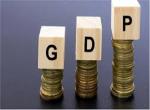India’s budget deficit is hardcoded into its left-liberal intellectual discourse. Most intelligent Indians comfortably straddle the views that government is corrupt, venal and inefficient and that more government spending is the answer to all development issues. This is convenient fodder for politicians who see themselves, for the most part, as feudal overlords. Launching government projects named after politicians (preferably family members) of yesteryears inflates their ego and sense of power. There will not be an end to this unless the public discourse on government spending undergoes a total transformation of emphasis from entitlement to empowerment. That might well be a long wait.
In the meantime, the humdrum and the painstaking task of managing the deficit and the media fall on the hapless Finance Ministers in the Indian government. Mr. Pranab Mukherjee, the current Finance Minister, is a veteran. He presented his seventh budget in his long and distinguished government service on 16 March. He promised to cut the deficit from 5.9% of GDP (estimated for the year ending March 2012) to around 5.1% of GDP. The fact that the government had projected a deficit of 4.6% of GDP for 2011-12 (versus 4.9% in 2010-11) puts both the revised estimate and the target for 2012-13 in perspective. The government’s budget framework document conceded that much of the deficit reduction is sought to be achieved through revenue mobilisation. Naturally, that raises questions on the impact on private sector profits, investment and growth, ironically feeding back into lower tax revenues.
More worryingly, more discretion is being given to the taxman. Where there is bureaucratic discretion, there is corruption and there is harassment. This is true worldwide and nowhere more so than in India. While the near restoration of the peak excise duty to pre-crisis levels and the hike in the service tax rate along with a negative list of services are reasonable revenue generating measures, retrospective amendment of tax laws is not. Even if they are not used, they send a worrying signal to honest taxpayers and to foreign investors.
Further, in the few days that have passed since the budget was presented to the Parliament, worrying details have emerged on how some of the measures might be wholly counterproductive, even if unintended. For example, monies raised by start-up ventures by individuals and institutions other than venture capital funds, might be treated as ‘income from other sources’! This will be a blow to start-ups that have to, mostly, rely on angel-investor funding. This is not the recipe to boost entrepreneurship and investment in the economy.
Besides the tax revenues and expected sale of government stakes in public sector enterprises, there is little by way of reining in government expenditure as a means to cut the deficit. India’s government expenditure, even if well-intended in most cases, is largely wasteful and lines individual pockets more than it serves the targeted beneficiaries. Hence, the failure to take the axe to government expenditure is not just disappointing but deeply worrying.
The big elephant in the room of budget deficit is the subsidy burden. In recent years, India’s subsidy burden has grown faster than GDP to stand at 2.4% of GDP. Projected expenditure on government subsidies is less unrealistic (it is not the same as being ‘more realistic’) than in the 2011-12 budget. The government intends to cap the overall subsidy burden at less than 2% of GDP. This is based on brave estimates for the major items of subsidy expenditure. For instance, the risk of the actual subsidy burden overshooting the budget allocation for petroleum products is quite high.
The biggest subsidy burden is on cooking gas which is cornered by the middle and upper income groups, in the name of the poor. From the website of the Indian Oil Corporation (Indian Oil ), it is possible to find the extent of ‘under-recovery’ – the difference between the price charged by the oil company for petroleum products to traders and the price that ought to be charged based on the international price of crude oil. These calculations can be found for petrol, high-speed diesel and cooking gas. This gap will, of course, change, based on changes in the imported price of crude oil for India. At 52%, the under-recovery for oil companies is in cooking gas is the highest in rupee and in percentage terms.
| High Speed Diesel | Petrol | Cooking Gas | |
| (INR per litre) | (INR per litre) | (INR per cylinder of 14.2 kgs) | |
| Under-recovery | 13.1 | 4.12 | 439.64 |
| Economic Price | 54.01 | 69.76 | 838.64 |
| Under-recovery as a % Economic Price | 24.3% | 5.9% | 52.4% |
| Calculation as of | 3/16/2012 | 3/16/2012 | 3/7/2012 |
Prices are based on New Delhi retail prices. Source: Indian Oil Corporation.
Yet, there is considerable intellectual resistance to removing subsidies on energy products. 1 The arguments are based on wrong and misleading comparisons with the developed world. India relies substantially on imported oil. Besides being a big part of our import bill, it is a security risk too. If India has to diversify its energy sources, it has to invest. That needs to be funded. In the meantime, prices must reflect the domestic scarcity of the resource. Second, hydrocarbon products cause pollution. The user has to pay. All countries levy taxes. Further, most products attract excise duty. Petroleum products are not exceptional in this regard. Of course, other countries adjust the tax burden when prices get too high. India is unable to do that because of, you guessed it right, its fiscal deficit. The poor can and should be given an income top-up instead of introducing and retaining distortions in the market prices of various products and services.
Another consequence of the under-recovery in petroleum products is their contribution to the persistence of high inflation expectations. Put differently, households know that there is always the likelihood that the prices of petroleum products - diesel, petrol and cooking gas – will be raised, to ease the burden on the government. The sooner the prices reflect international trends and adjust automatically, the expectation of an administered price hike luring around the corner will fade. Therefore, with its subsidies, the government is not only adding to its deficit burden but also keeps inflation expectations high.
The Finance Minister understands the gravity of the situation. But, the political will and support - not just from within the Congress Party but from the entire political spectrum - needed to deliver on this promise is suspect. The sordid drama of the rollback of the fare increases announced in the Railway budget is a painful reminder of how politicians hurt the nation enormously, rather casually. However, the Congress is particularly guilty because it has appointed an economist as the Prime Minister and yet has turned the discourse on public spending away from sustainability and efficacy and towards entitlement.
To meet its budget deficit target, the government has to rely on luck and guts. Unfortunately, it has a big deficit on both of them too.
Reference :
Author is Visiting Fellow in Vivekananda International Foundation
Published Date : 31st March, 2012









Post new comment